To celebrate Bloomsday, a day in tribute to one of Irish literature’s greatest works, we tried to imagine what technology famous Irish literary geniuses would makes use of if they were alive today.
Ireland has no shortage of literary heroes and, for the day that’s in it, we couldn’t help but wonder: would James Joyce be an iPhone or an Android man? Would Patrick Kavanagh be a Luddite or would he embrace all that technology has to offer? Would Samuel Beckett be an Apple fanboy? Would Maria Edgworth be a techie hipster?
With all the technology we have available to us today, imagine what these writers, poets and playwrights would have made of it all – or simply read our take on classic literature meets the digital age.
James Joyce (1882–1941)
James Joyce in the modern day would keep a blog, ‘Portrait of the Artist as a Young Tweeter’, which would contain lengthy stream-of-consciousness posts that he would prepare by dictating to Siri on his iPhone. His online chats with Nora Barnacle, Oliver St John Gogarty and Alfred H Hunter (who it is said inspired Leopold Bloom) would span lines upon lines of text, and he would be a prolific contributor on Boards.ie, under the moniker JJ1882.
A regular in Dublin’s best taverns, Joyce would, of course, be mayor of just about every Dublin pub on Foursquare.

Oscar Wilde
A Twitter addict for sure, Oscar Wilde would constantly churn out witty epithets on the micro-blogging site – practically all of which would be retweeted by Stephen Fry. He would definitely have all of the latest gadgets, but more to show off his status than anything else.
Often, when Wilde has friends over for a party, the night would end with a game of SingStar or Everybody Dance on the PlayStation 3, though the literary genius would have a bit of a strop if the game said he didn’t quite reach the high notes in Take That’s, Rule the World.
We suspect Mr Wilde would have a reputation for taking these frustrations out on poor, unsuspecting forum users as a pesky troll under the alias, OscarTheGrouch.
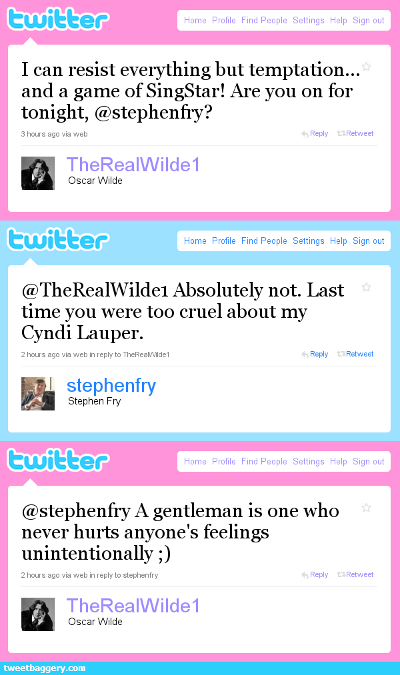
Samuel Beckett (1906–1989)
Best known as one of the world’s last modernist writers, Samuel Beckett had an ascetic approach to life that would have impressed Apple’s Steve Jobs. In fact, they dressed pretty similarly – black turtleneck sweaters – and you get the sense that Beckett was big into simplicity, minimalism and clean design.
In the 21st century, Beckett would have been an Apple fanboy, and would no doubt have relished the beautiful, clean and simple finish on devices like the iPad, the iPhone and Mac Pro. But his axe of choice for whacking out novels and plays would be the MacBook Air, which he would effortlessly transport around Paris. However, if he decided to write his works in Ireland, his most notable play might well be Waiting for Broadband.
At home, Beckett, who was big into the boxing, would probably be very happy with a HD TV with a almost non-existent bezel such as the Samsung ES8000.
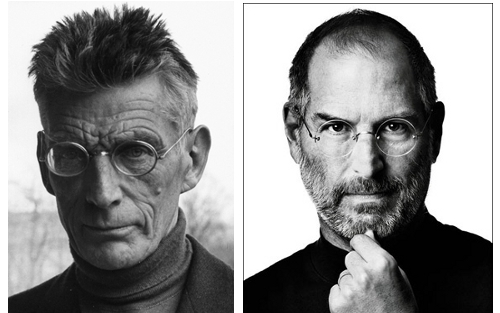
Samuel Beckett and Steve Jobs shared a love of turtlenecks
Patrick Kavanagh (1904–1967)
We suspect that Patrick Kavanagh – one of the foremost Irish poets of the 20th century –might have been a hacker had he been around today. Why? Because he liked to kick out at rural ignorance and at the faux intellectual veneer of life in the cities of Ireland, and he was no stranger to controversy, with his early works being seized by the authorities.
As well as being a notorious drinker, one of his most famous poems contains the line, “Oh commemorate me where there is water”, so his gadget of choice would have to be a robust waterproof smartphone, such as the Motorola Defy Mini – perfect for the muck and rain and stony grey soil of Monaghan.

Today, Patrick Kavanagh would contemplate his next hack by Grand Canal. (Image: Wikimedia Commons)
Brendan Behan (1923–1964)
Another tough scribe who requires a tough phone would have to be Brendan Behan, and we deem that his gizmo would have to be the JCB phone, because, like him, it could take one hell of a beating. Then again, often preferring to write long-hand or to type, Behan would likely be a fan of devices like the Samsung Note or a forthcoming Windows 8 tablet/ultrabook combo.
Behan would probably be an outspoken blogger on WordPress. Having hated being tape-recorded or filmed, he wouldn’t be a fan of YouTube, Audioboo or SoundCloud, but Twitter might be used to spew forth words rather than conserve them, one of his famous lines being: “There’s no bad publicity except an obituary.”
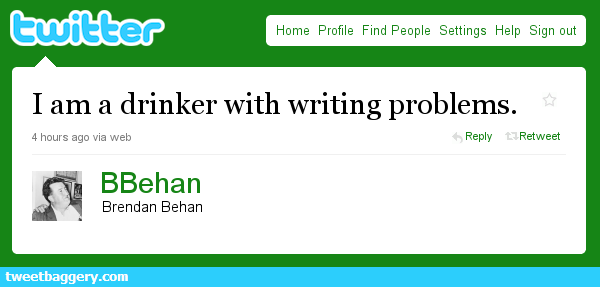
John B Keane (1928–2002)
A writer of the lyrical tradition we can only assume that devices like the new iPad, which features a dictation feature, might have proven excellent for capturing the rich dialect, eloquence and canny observations of the human condition for which Keane was renowned and celebrated. But, then again, perhaps technologies like Siri on the Apple iPhone 4S may have struggled with the Kerry accent?
Known for his famous play The Field, we also reckon that John B Keane might be quite taken with Farmville.

Bram Stoker (1847–1912)
Nokia recently released a limited-edition Lumia 900 ‘Batphone’, as a tie-in to the upcoming film, The Dark Knight. The phone features the Batman logo emblazoned on its back, and who better to carry the device than the author of Dracula, Bram Stoker? He would use the smartphone to read an e-book version of Twilight and watch video clips of Buffy the Vampire Slayer, naturally.

George Bernard Shaw (1856–1950)
Playwright George Bernard Shaw had quite a bit to say about social problems, and he would be drawn to social media to broadcast his views. He would take to his WordPress blog to write more about marriage, religion, healthcare, education, government and class privilege and post videos on YouTube of himself talking about these subjects or debating them with others.
When he wasn’t doing that, Shaw would make notes, draft outlines for his Pygmalion web series or jot down ideas for plays or future blog posts on Evernote.
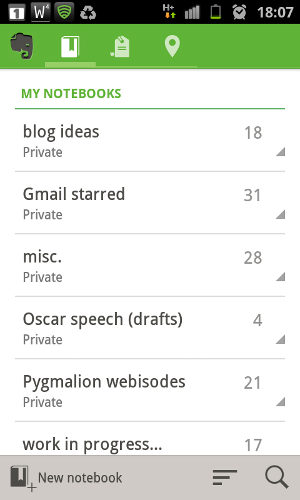
Jonathan Swift (1667–1745)
Writer Jonathan Swift seemed to be quite popular with the ladies, particularly ones named Esther. He also travelled often between Ireland and England.
Swift, therefore, would make good use of Skype, text messaging and Facebook chat, so he could woo and converse with Esther Johnson, Esther Vanhomrigh, and later Anne Long, even from a great distance. He would be a prolific emailer, as well, as one cannot pen letters to Ms Johnson (as he did) in a mere 140 characters.
Known for his coded, babyish language in love letters, we’re fairly certain that Swift would be a text-speak culprit.

Mary Lavin (1912–1996)
Even though Mary Lavin dealt mostly with words as a novelist and short-story writer, Instagram and Flickr accounts would feature in her in life. Her surroundings would provide fodder for many of her photos: life in rural Ireland, her family farm, the fields of Athenry, as well as her literary awards.
Though she would have been 100 this year, we think a modern-day Lavin would also listen to female singer-songwriters on her iPod, who could also inspire her own writings, such as Sinéad O’Connor, Ani Difranco, Tori Amos, PJ Harvey and Fiona Apple. She may have even compiled her own mixes using 8tracks.

WB Yeats (1865–1939)
There’s no question what modern technology the Irish poet and playwright William Butler Yeats, who was a leading figure in the Irish Literary Revival and the co-founder of the Abbey Theatre, would have liked. Winner of the Nobel Prize in Literature in 1923, Yeats was fascinated by the occult, spirituality and Irish folklore. We reckon he would have been a big gaming fan, potentially Game of Thrones and World of Warcraft.
Considering his unrequited love for the Irish nationalist and feminist Maud Gonne, who inspired many of his poems (think No Second Troy), perhaps Yeats would have liked using his iPhone to take snaps of his muse, uploaded to Instagram, of course.

Maria Edgeworth (1768–1849)
Author of adult and children’s literature, Maria Edgeworth spent a lot of her life at the family’s Edgeworthstown Estate in Co Longford. Edgeworth was the third of her father’s 22 children, so no doubt she made use of Facebook to keep track of all those birthdays.
We reckon that Edgeworth would have liked a user-friendly digital SLR camera, like the new Canon EOS 650D, to photograph the views around Edgeworthstown and use these to illustrate in her children’s e-books. She may have also liked to just wander through the estate, listening to her favourite indie artists on Deezer.

Judging by that outfit, it’s not hard to imagine Edgworth as a hipster. (Original image: Wikimedia Commons)
Elizabeth Bowen (1899–1973)
Elizabeth Bowen was a Dublin-born novelist and short-story writer. Her war novel The Heat of the Day, published in 1949, is renowned for its depiction of London during the bombing raids of World War II. Another one of her early novels The Last September was penned in 1929.
Deeply influenced by film, we imagine Bowen’s Netflix account recommends plenty of war films and dramas, like Saving Private Ryan and Atonement, as well as stacks of recordings from the History Channel on her DVR. She would also secretly love Captain America: The Last Avenger in 3D.
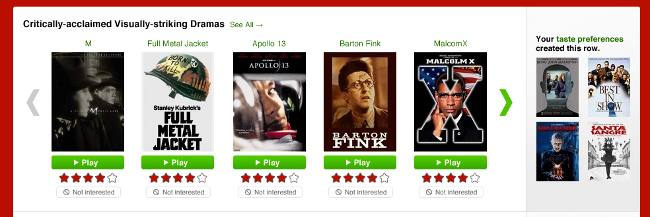
Ebooks image via Shutterstock.